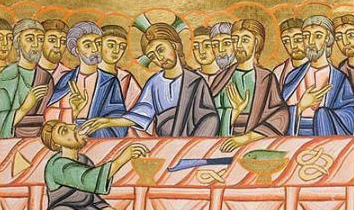Lenten Campaign 2025
This content is free of charge, as are all our articles.
Support us with a donation that is tax-deductible and enable us to continue to reach millions of readers.
According to tradition, pretzels were invented by Italian monks — so no, pretzels are not originally German — in the early seventh century. Older monks would treat novices and small children to baked dough twisted in the shape of crossed arms, a classic monastic praying posture.
These treats were called pretiolas, meaning “little prizes,” small rewards for kids who had successfully memorized their prayers. Some other say that they were originally called bracellae (“tiny arms” or “little arms”), which is where we get our German “brezel” from, according to uCatholic.
Considered by many as a classic Lenten treat, since it is only made of flour, water and salt, with no dairy or eggs added at all, tradition also gave pretzels an extra spiritual meaning: the three holes in it came to represent the Holy Trinity – Father, Son and the Holy Spirit — as the custom spread from Italy to the rest of Europe, and were eventually associated with long life and prosperity as they became a great, easy, tasty way to get a full stomach.

